There has been a lot of discussion and political turmoil in recent times on the ‘right to intimacy’ in our democratic world where live-in relationships, LGBT, and single parents are the norm. Physical love is widely accepted to be one of the primary forms of intimacy. Love affairs test the boundaries of all forms of social and biological norms.
However, love affairs have been a taboo in India chiefly due to their physical implications. Indians of all creeds and religions scorn physical love. What is astonishing about this phenomenon is that attitudes of ancient Indians, the Hindus, were very much different. Copious evidence can be still found in the old temples and palaces of India in addition to numerous literary sources. The expressions of Hindus reflect the holistic embrace of the physical self with the universal spirit, revealing a moral worldview that contrasts with the contemporary sensibilities of modern Indian society.
Sex and sensuousness are a major issue in everybody’s phenomenal life and are a constitutionally and rationally integral force of the organic self. But at times it is looked down upon as a purely radical material concern and therefore counter to a respectable and spiritual life. This attitude can be traced to the Abrahamic tradition, particularly the Christian bible, which downgrades sex in its naturality and holds the physical body as inherently (genetically) perverted and tainted. Thereby this view falsely implicates the assuagement of the physical body as undesirable for a meaningful and just life.
Could the physical aspects of love and sex not be a genuine part of the spiritual as a sattvic way of life? What defines intimacy? On the other hand we have a highly revered Radha-Krishna relationship that encompasses various degrees of intimacy. This article discusses the Vedantic viewpoint of the relationship between Radha and Krishna and questions the wisdom in downgrading sex.
Tradition And History of The Radha-Krishna Affair
The various dimensions of the complex Radha-Krishna love story pertinent to human life have been revealed to us through the ages by various Indian scholars and writers, ancient and modern, as well as scholars from all over the world. The Radha-Krishna love affair has been explained by many in the frameworks of the purusha-prakriti principle of the Sankhya-Yoga philosophy, of mystical bhakti (devotion), of the Tantric traditions and of purely materialist philosophy. However, in recent times, the unapologetic sensuous aspect of the divine love affair has relegated a sublime love story to the level of pornography, when its anything but that. It is also downgraded as a rule in view of the fact that the contemporary Indian sensibility prejudicially disdained physical love.
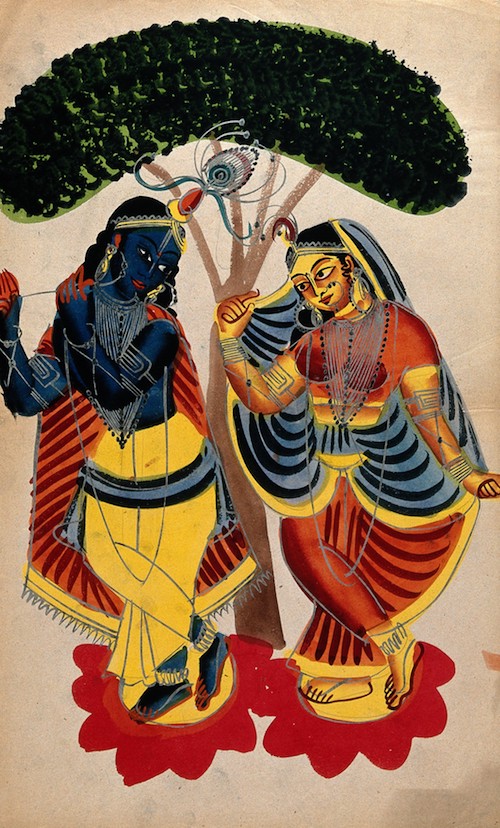
The earliest source of Krishna’s reputation as a great lover can be found in the Harivamsa Purana, which appeared as a supplement to the Mahabharata at least around 2000 years ago. Subsequently, Vishnu Purana and Bhagavata Purana, like Harivamsa Purana, also dwell on the avatar’s aspect as a sensuous lover.The role of the perfect lover adds up to Krishna’s multi-faceted personality, leading many Vedantic exponents to consider him as the complete Vishnu avatar. The Bhagavata Purana proclaims itself to be the greatest of all Puranas (Bhag. 12.13.16).
The Bhagavata mentions a certain nameless gopika who was favoured by Krishna for a time, while none of the other ancient literary sources mention Radha. This is one of the rare instances where a major deity in the Hindu tradition is not clearly mentioned. In Sanskrit literature, she appears for the first time in the inscriptions of the Paramara king, Vakpati Munja of Malwa (CE 973-94). However, the Radha-Krishna affair existed in the vernacular as folklore alongside Krishna’s other exploits and the roles he played for the upkeep of dharma.
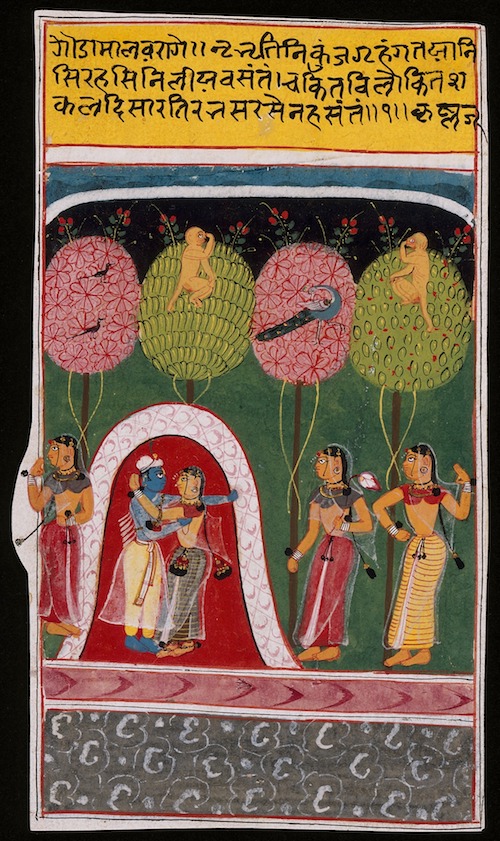
But this love affair did not make it to the classical level until Jayadeva composed Gitagovinda in the 12th century. Jayadeva broke away from past conventions and elevated Radha to a classical deity worthy of worship and described Her as an appropriate counter figure for Krishna in his role of the perfect lover, who emerges as the unquestioned central concern of His amours. Krishna was no longer a detached lover reciprocating the passion of gopis with equanimity. He suffered and agonized like Radha, in separation.
Krishna becomes complete as a lover only beside his consort, Radha. It could be argued that the Radha-Krishna affair shows very scant respect for middle-class morality and social inhibitions that define marital and familial ties. According to certain traditions, Radha was seven years older than Krishna and had fallen in love with him at first sight when he was a toddler, some claim the relationship to be illicit and so on. The apparent deviation from contemporary societal norms is a characteristic feature of the Radha-Krishna love affair that challenged conventional Hindu sentiments and continues to do so in the present times.
After Krishna left Vrindavan for Mathura, he continued to play his role as lover, fulfilling the desire of Kubja, a deformed and hunchbacked woman, eloping with Rukmini and making her his queen, then marrying more women in due course. However, the Radha-Krishna love affair is different from Krishna’s other love relationships in that one cannot miss the multidimensionality here. It is believed that Radha was Krishna’s first wife and was pointed out Bhandirvana in Vrindavan where Radha and Krishna had a Gandharva wedding in the presence of Lord Brahma himself. According to lore, in their last tryst before he leaves for Mathura, Krishna’s mesmerizing flute that erotically aroused all entities with its enchanting melody is bequeathed to Radha. He never played the flute again nor did he ever come back to Vrindavan.
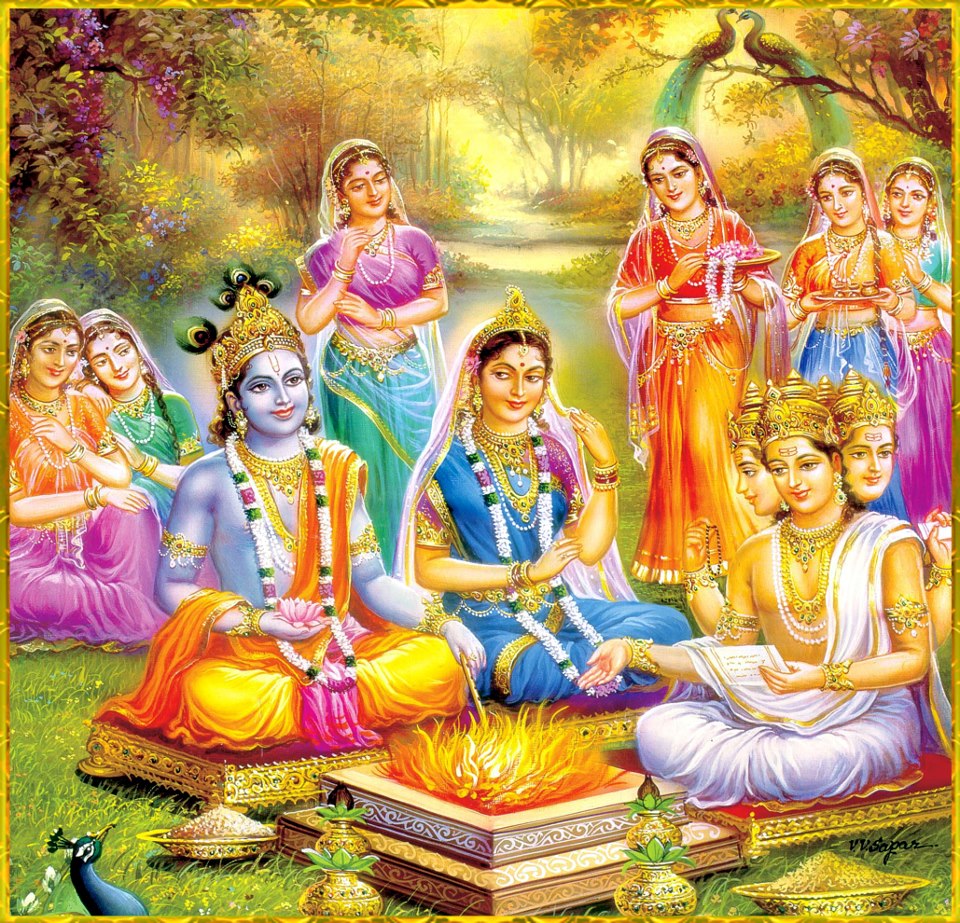 The centuries following Jayadeva were a tremendously creative period in sensuous love poetry narrating the Radha-Krishna affair; this time not in Sanskrit but in the languages of the common man, drawing on oral traditions. Chandidasa (Bengali), Vidyapati (Maithili), Surdas and Bihari (Braj) and Govindadasa (Brajaboli) presented the wide range of bold nuances in love play in the Radha-Krishna story and exhausted the whole spectrum of love covered by the divine couple.
The centuries following Jayadeva were a tremendously creative period in sensuous love poetry narrating the Radha-Krishna affair; this time not in Sanskrit but in the languages of the common man, drawing on oral traditions. Chandidasa (Bengali), Vidyapati (Maithili), Surdas and Bihari (Braj) and Govindadasa (Brajaboli) presented the wide range of bold nuances in love play in the Radha-Krishna story and exhausted the whole spectrum of love covered by the divine couple.
The Radha-Krishna tradition continued to inspire the people of India until Abrahamic sensibilities made inroads into the Hindu heartland through the missionaries and their colonial facilitators, both native and foreign. The success of the missionary campaign against the devadasi community was a mortal blow against this tradition. How lasting this turn of sensibilities was for the missionary-civilised Hindus can be discerned today by the overwhelming number of Hindus who are apologetic of the Radha-Krishna affair and who even try to bring up excuses for the sensuous story and explain away the love play as a metaphor for the mystical longing of the jivatma for the paramatma and so on and so forth. The statement is partially unfounded and displays the overwhelming degree of ignorance that has crept into modern Hindu society.
The Physical Body According to Vedanta
According to Vedanta, the knowledge of the self, the true reality, is the objective of human life that culminates in self-realization. This means self-realization is only pertinent to the human condition, of which the physical body is an indispensable element. The ‘Self’ is contextually used as the ‘Atman (Soul)’ the mind, intellect and body. The knowledge of Self begins from the physical body.
Besides being a reference point for existence, the physical body is an integral part of the material, phenomenal world composed of five elements, without which the knowledge of the self is impossible. It is the physical body that paves the way for self-realization. Vedantic metaphysics postulates that unrealized atmans go to pitruloka, where they enjoy their just deserts, but only to come back to earth as human beings pursuing the atman’s ultimate objective of self-realization. Self-realization takes place only on earth as humans, or to put it in another way, self-realization is applicable only at the level of human reality. Self-realization is neither valid nor applicable without a human body. The atman (self) takes a particular human body for carrying out its mission and is completely responsible for the body, in other words the deha (body) and the dehi (wearer or owner of the body). It is in this sense that the body is called a temple of the atman (self).
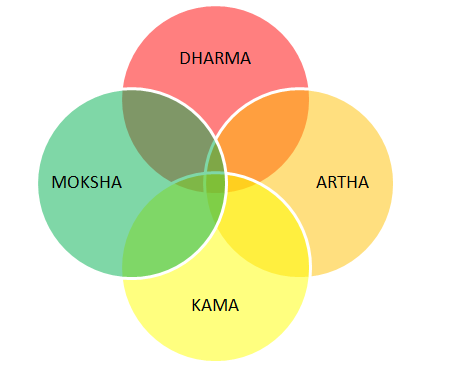 Spiritual life starts from the physical. According to Vedanta, one needs to finish with the matters of the body to advance to the next stage. One cannot aspire for self-realization without negotiating the body or independent of it. It is a futile effort to bypass the physical body to get to the spirit without coming to terms with it. Because body is a function of the mind, negation of the physical aspects of self cannot aspire to turn to Vedanta. This is the first step to ascend to the spiritual level. Generally, all Vedanta philosophical streams don’t make much of sex or physical love and some proponents even go to the extent of negating it. The reason is very simple – people turn to Vedanta only once they have negated sex and physical love. People who have physical desires need to address that first.
Spiritual life starts from the physical. According to Vedanta, one needs to finish with the matters of the body to advance to the next stage. One cannot aspire for self-realization without negotiating the body or independent of it. It is a futile effort to bypass the physical body to get to the spirit without coming to terms with it. Because body is a function of the mind, negation of the physical aspects of self cannot aspire to turn to Vedanta. This is the first step to ascend to the spiritual level. Generally, all Vedanta philosophical streams don’t make much of sex or physical love and some proponents even go to the extent of negating it. The reason is very simple – people turn to Vedanta only once they have negated sex and physical love. People who have physical desires need to address that first.
The purushartha or the four essential pursuits of human beings, as laid down by Hindu sages includes ‘kaama’ as a progressive journey. However it is the kaama that needs to be rejected for a spiritually progressive life. This seeming contradiction can be resolved easily because the latter version of kama is an aberration in the absence of dharma (adharma). The difference can be demonstrated by the example of consensual sex and rape.
Satisfaction of worldly desires in the ‘framework of dharma’ is a prerequisite for an atman before turning to moksha or self-realization. This pursuit is an episode in the life of every atman. However, the ‘purna’ (fullest/most expressed) avatar of Vishnu is beyond any man-made rule, as demonstrated by the Radha-Krishna love story. The temporal and therefore illusory social norms and inhibitions do not prevent the unravelling of the unique intimacy, clearly revealing these social interdictions to be utterly unsubstantial in the face of the everlasting values of life (Santana Dharma).
Shades of sex
Vedanta acknowledges that sexual desire is, at its core, longing for union with God [brahman]. Sex and physical love express themselves in a wide variety of ways. From the animals to the humans it can create havoc, if the urge is thwarted in its natural course. And when the unregulated or unnatural urges enter the human psyche, it sets the demonic emotions into motion. At the other end of this wide spectrum is the divine sex practised by Radha-Krishna. But both have their roots in the gross human body. In between this range, the several shades of physical love span out to cover a wide range of human emotions. An average consensual sexual relationship is said to teeter through all the three gunas or basic qualities of nature in a fluctuating wave.
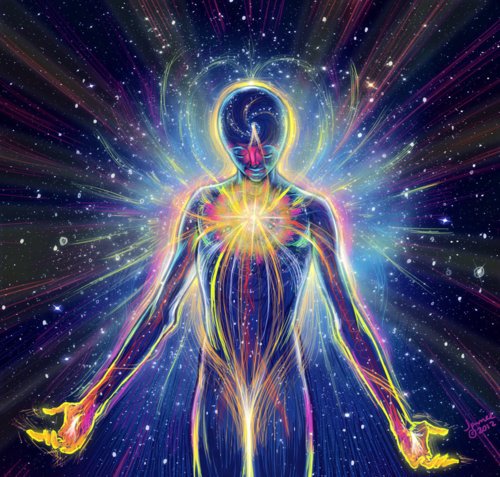 A student of Vedanta is required to rise above the three gunas equally, but for those who are still engrossed in the physical plane and have not yet turned to Vedanta, the sensible first step is to cultivate the sattvic tendency than to negate the physicality per se. And for the common people who are far away from Vedanta by inclination or custom, the correct course was inevitably drawn by the Dharma Sastras.
A student of Vedanta is required to rise above the three gunas equally, but for those who are still engrossed in the physical plane and have not yet turned to Vedanta, the sensible first step is to cultivate the sattvic tendency than to negate the physicality per se. And for the common people who are far away from Vedanta by inclination or custom, the correct course was inevitably drawn by the Dharma Sastras.
The Ultimate Sexual Union
This is corroborated by a late 16th century condensed version of the Bhagavata titled ‘Narayaniyam’ composed in Sanskrit by Melpathur Narayana Bhattatiri. The Bhagavata does not mention Radha, but by the time of Melpathur, she was already a revered figure. The 2nd sloka of the 63rd dasakam mentions that Krishna left the gopikas in the lurch and disappeared when he found that his association with them caused self-conceit in them. The 3rd sloka introduces Radha and also reveals why Krishna preferred her company.
In the exegesis (vyakhyanam) of this sloka, Professor R. Rama Varma Thampuran mentions that because of her egolessness, Radha was able to enjoy the bliss of union without the separation, whereas the other gopikas were deprived of Krishna’s presence because of their pride in their worldly self. The ultimate union of the atman and paramatman is achieved by losing the ego or the lower self that is attached to the body. This aspect introduced the adage “ek atman do sharir” (one atman two bodies) pertinent to Radha and Krishna.
Later, the unexpected farewell in Vrindavan that separated Radha from Krishna with much heartbreak is complemented by their meeting years later in Samanta Panchakam, the five water bodies that make up the Tirta in the Sarasvati drainage basin, in Kurukshetra. It predated Kuru and was a popular place of yajna for devas and renowned as the Brahmapura of the humans. Narayaniyam 84th dasakam describes Krishna’s journey to Samanta Panchakam during a solar eclipse with his entourage, all the Yadava men and women beside his wives, the Pandava princes and Draupadi. There they also meet Nanda and the gopis and gopikas including Radha.
 The ultimate union of the divine lovers takes place there. Krishna first makes peace with the gopikas, removing their pangs of separation by holding each of them to his bosom. The gopikas get instant liberation by experiencing the final union with their beloved. Then Krishna approaches Radha. He expresses his passion and puts forth excuses for his absence blaming it on the battles that had taken a toll on his time. Radha’s sorrow of separation and the bitterness she harboured in her heart is entirely assuaged by his embrace and they become one with each other.
The ultimate union of the divine lovers takes place there. Krishna first makes peace with the gopikas, removing their pangs of separation by holding each of them to his bosom. The gopikas get instant liberation by experiencing the final union with their beloved. Then Krishna approaches Radha. He expresses his passion and puts forth excuses for his absence blaming it on the battles that had taken a toll on his time. Radha’s sorrow of separation and the bitterness she harboured in her heart is entirely assuaged by his embrace and they become one with each other.
In the linear timeframe the affair with Radha is a closed episode in Krishna’s life, but at the same time it becomes a recurrent, earthly moment framed in eternity. Krishna’s flute still beckons human souls and all creatures that are born, live and die on earth. Whether we like it or not we are subject to the unique, earthly magic of love in all its sensuous variations, with its sweet joy of union and its pangs of separation. Sri Krishna and Srimati Radha, his worthy counterpart, teach us a basic lesson in earthly life: we can deny physical love but never the need for intimacy of which physical is but a part!
Transformation of Attitudes
Downgrading the sexual aspect of human life has two-fold disadvantages. One, people are denied one of the pursuits in the purusharta, the natural link of progression from the physical to the spiritual. Two, it denies physical love to those who need it. This deficiency also entails physiological and thereby psychological ill health. The suppression of natural sexual expression inevitably leads to decay and destruction of culture and ultimately of the species.
It is well known how the ‘Abrahamic type of monotheism’ destroyed the goddess worship and how its forceful dissemination of aberrant sensibilities destroyed the naturally evolved nature-worshipping religions, commonly termed paganism, and imposed a worldview insulated from natural phenomena. The alarming rates of sex crimes in India today are a direct result of the rise of the Abrahamic sensibility all over in the last millennia and the alienation of Indians from their natural moorings. Transgressions on women are unashamedly attributed to the woman and not to the man, and this injustice can be directly ascribed to the waning awareness of the divine feminine in human consciousness.
 Without Radha, Krishna is not the perfect lover. This is probably why he is considered the complete avatar, spiritualising and accomplishing a human want, which no avatar has done before. Krishna’s flute is a symbol that anchors us to earth, without which we ordinary mortals cannot hope to ascend from the temporal pleasures and sorrows to eternal bliss. Love between a man and a woman is a sacred thing in Sanatana Dharma. It is the privilege of the female to be the prime mover and the male ideal is always responsive. This is the true story narrated by the Radha-Krishna love affair.
Without Radha, Krishna is not the perfect lover. This is probably why he is considered the complete avatar, spiritualising and accomplishing a human want, which no avatar has done before. Krishna’s flute is a symbol that anchors us to earth, without which we ordinary mortals cannot hope to ascend from the temporal pleasures and sorrows to eternal bliss. Love between a man and a woman is a sacred thing in Sanatana Dharma. It is the privilege of the female to be the prime mover and the male ideal is always responsive. This is the true story narrated by the Radha-Krishna love affair.




